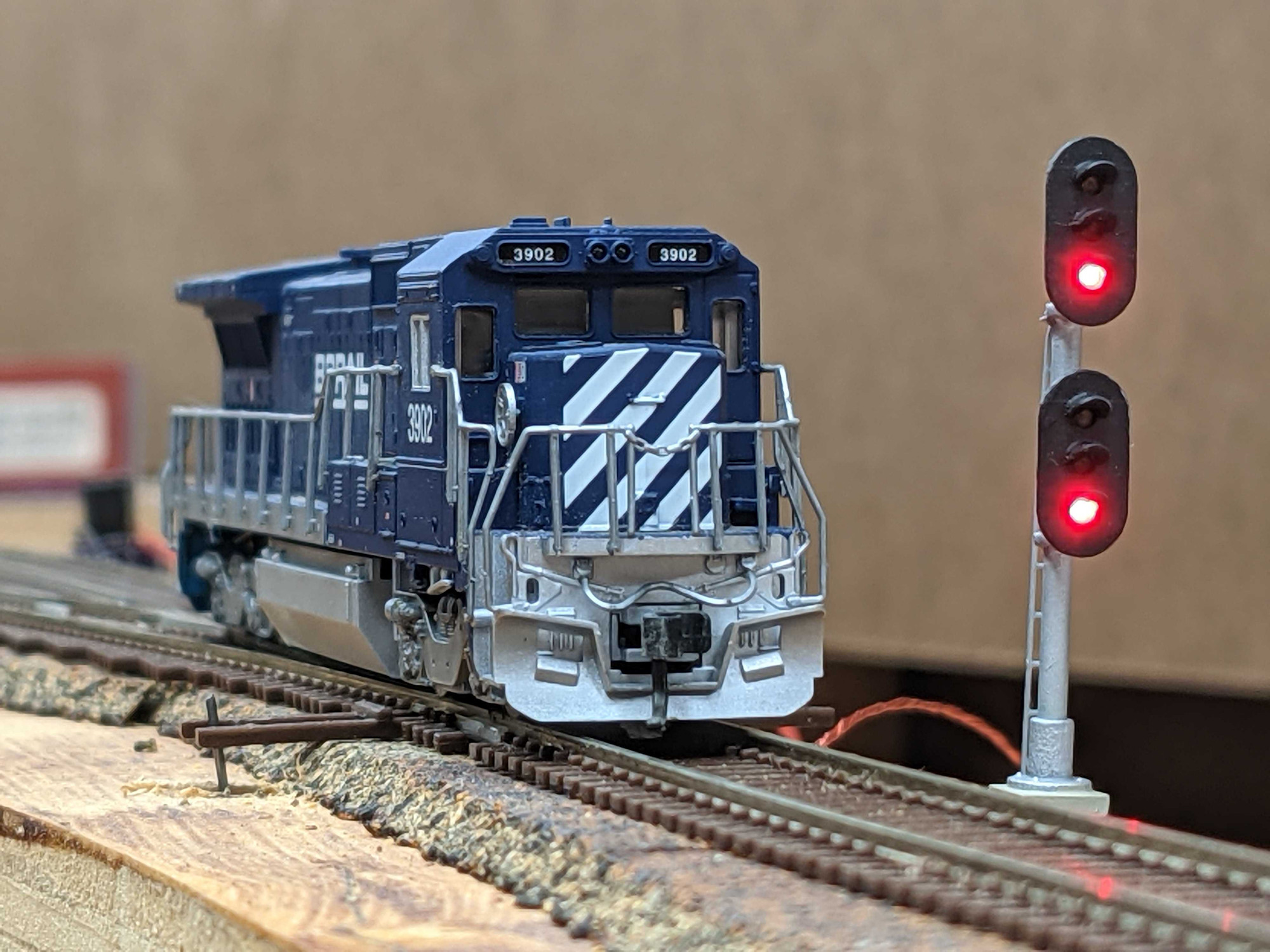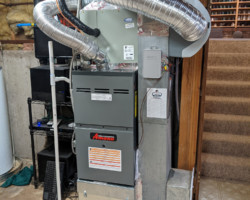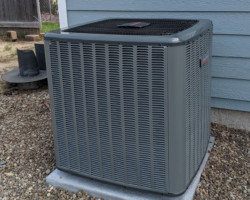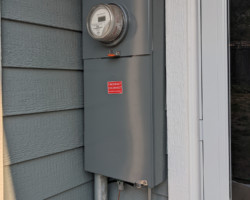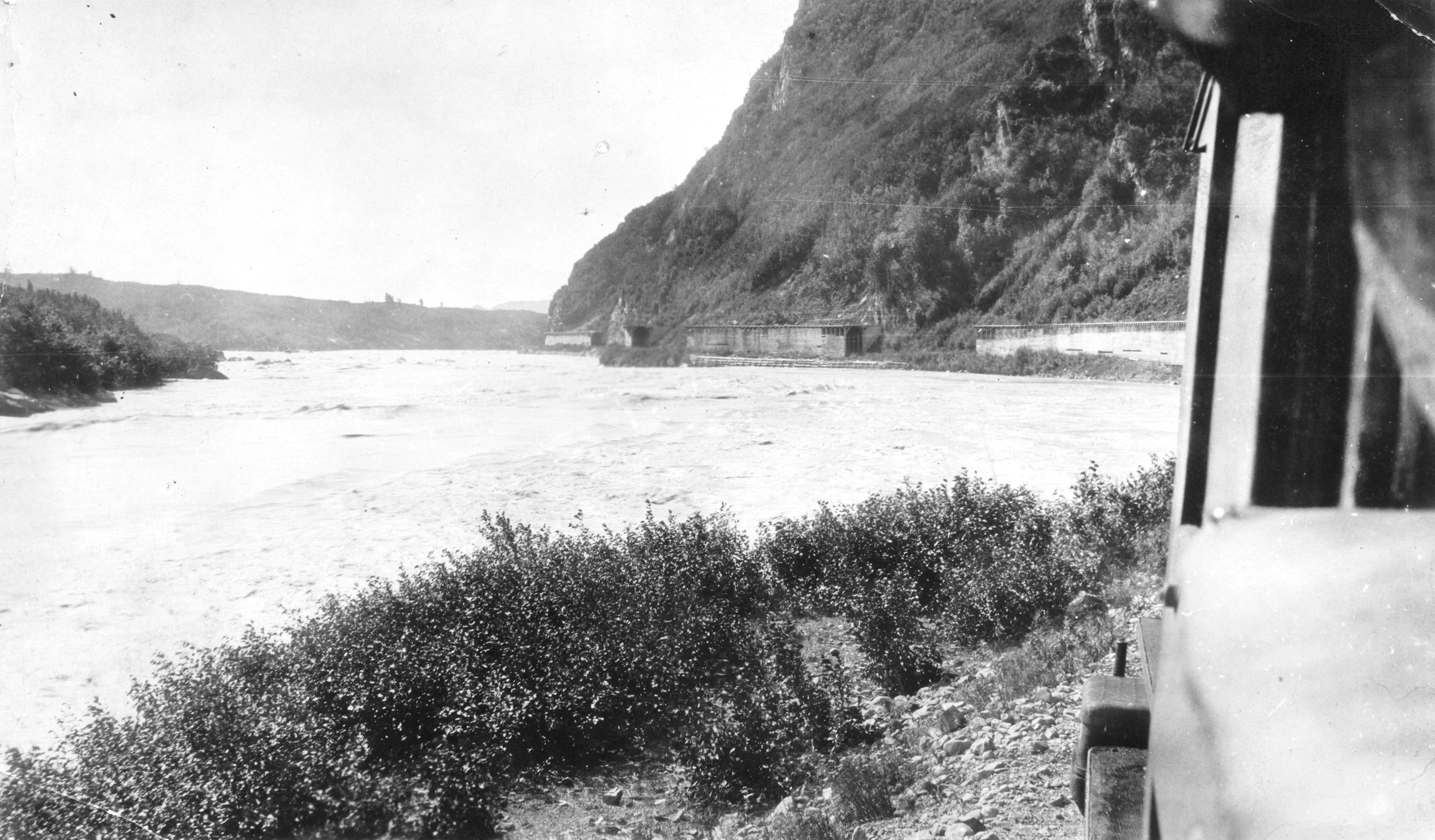Progress this year has been slow. Between my real job, Iowa Scaled Engineering and projects around the house, I haven’t spent a lot of time in the layout room since March. The biggest thing I wanted to get done before getting back to the layout was to upgrade the furnace and finally, after 20 long years, add air conditioning to the house. Believe it or not, it wasn’t terribly common out here until about maybe the last two decades. There would always be a couple weeks in the summer that were terrible, but otherwise opening the windows and having a few fans was adequate. However, with working at home every day now, the higher heat load from all the computers and such, and the pervasive smoke from forest fires in the West in recent years, I decided the time was at hand.
I’d been procrastinating because adding air conditioning to this house (built in 1977) was also a non-trivial exercise. The house didn’t have a large enough electrical feed to handle it, the breaker panel was full, and my old furnace couldn’t handle it anyway. So it was an exercise is what programmers refer to as “yak shaving” – the seemingly endless series of small tasks that have to be completed before a project can move forward. “But to do X, I need to also upgrade Y, and to upgrade Y I need to also fix Z…”
I finally got fed up with it and pulled the trigger in July. Since the furnace is in the layout room and any AC lines would need to work around the layout, I wanted to get it done before any scenery started this fall. And it’s truly amazing what you can accomplish when you just open the checkbook and get some true professionals in to look at the job. In two days, I had a new heat pump, furnace, and the house was updated to 200A power. And now the whole house – including the layout room – stays nice and cool all day long.
So what I have I done on the layout lately? Not much. About the only thing I really have to report is identifying a source for new signals. While I love the detail of the Century Foundry searchlight kits, getting enough light through those tiny fibers and just the time it takes to build them isn’t the best use of my time. So I’ve been looking around at other options.
At Spring Creek’s Deshler train show back at the end of July, I found some signals from Custom Signal Systems at Azatrax‘s table. They’re quite nice, though not quite as detailed as the CF kits, and relatively affordable. They’re also nice and bright, which will be important for an operations-focused N scale layout.
